-
 Bitcoin
Bitcoin $108,165.4587
0.78% -
 Ethereum
Ethereum $2,456.3517
1.15% -
 Tether USDt
Tether USDt $1.0003
0.00% -
 XRP
XRP $2.1934
0.05% -
 BNB
BNB $650.0935
0.52% -
 Solana
Solana $151.3905
2.69% -
 USDC
USDC $0.9998
0.00% -
 TRON
TRON $0.2751
-0.32% -
 Dogecoin
Dogecoin $0.1640
0.87% -
 Cardano
Cardano $0.5631
0.57% -
 Hyperliquid
Hyperliquid $38.7115
4.69% -
 Bitcoin Cash
Bitcoin Cash $493.1868
-0.39% -
 Sui
Sui $2.8217
3.61% -
 Chainlink
Chainlink $13.3994
2.08% -
 UNUS SED LEO
UNUS SED LEO $9.1632
0.94% -
 Avalanche
Avalanche $18.0318
1.97% -
 Stellar
Stellar $0.2388
0.35% -
 Toncoin
Toncoin $2.8763
1.41% -
 Shiba Inu
Shiba Inu $0.0...01160
1.59% -
 Litecoin
Litecoin $86.6393
1.29% -
 Hedera
Hedera $0.1485
0.16% -
 Monero
Monero $315.7948
1.56% -
 Polkadot
Polkadot $3.4240
1.88% -
 Bitget Token
Bitget Token $4.6314
-0.44% -
 Dai
Dai $0.9998
-0.01% -
 Ethena USDe
Ethena USDe $1.0002
-0.01% -
 Uniswap
Uniswap $7.2110
2.59% -
 Aave
Aave $270.6087
6.07% -
 Pi
Pi $0.5350
0.52% -
 Pepe
Pepe $0.0...09545
1.26%
What is the process of withdrawing money from OKX to Bitfinex
To transfer funds from OKX to Bitfinex, ensure both accounts are verified, enable 2FA, check fees, generate a Bitfinex deposit address, and monitor the transaction on a blockchain explorer.
Apr 03, 2025 at 02:14 am
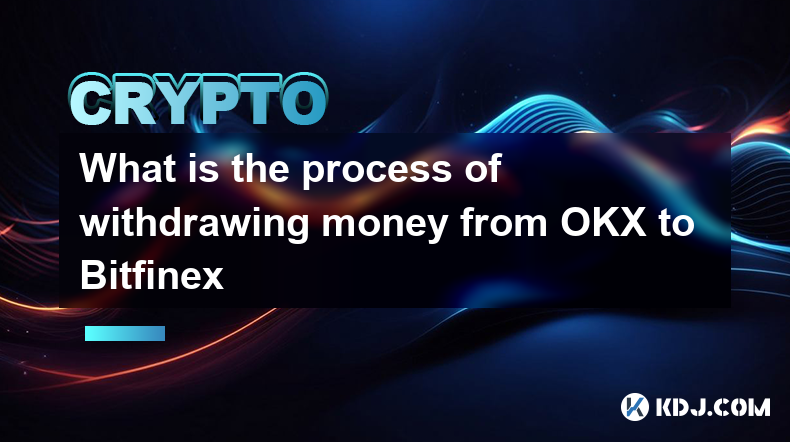
Withdrawing money from OKX to Bitfinex involves several steps that ensure a smooth and secure transfer of funds between these two cryptocurrency exchanges. This process requires careful attention to detail to avoid errors and potential loss of funds. In this article, we will guide you through the entire process, from preparing your accounts to completing the withdrawal and deposit on both platforms. By following these steps, you can efficiently move your assets and continue trading on Bitfinex.
Preparing Your Accounts
Before initiating the withdrawal process, it's crucial to ensure that both your OKX and Bitfinex accounts are fully set up and verified. Start by logging into your OKX account and navigating to the security settings to enable two-factor authentication (2FA) if you haven't already. This adds an extra layer of security to your account. Similarly, log into your Bitfinex account and ensure that your 2FA is enabled. Also, make sure that your Bitfinex account is fully verified, as this is necessary for depositing funds.
Checking Withdrawal Limits and Fees
Next, you should check the withdrawal limits and fees on both OKX and Bitfinex. On OKX, go to the withdrawal section and review the limits and fees for the cryptocurrency you intend to transfer. Similarly, on Bitfinex, check the deposit limits and fees for the same cryptocurrency. Understanding these limits and fees will help you plan your withdrawal and ensure that you are aware of any costs involved. Keep in mind that fees can vary depending on the cryptocurrency and the network congestion at the time of withdrawal.
Generating a Deposit Address on Bitfinex
To proceed with the withdrawal from OKX, you need to generate a deposit address on Bitfinex. Log into your Bitfinex account and navigate to the deposit section. Select the cryptocurrency you wish to deposit and click on the "Generate New Address" button. Bitfinex will provide you with a unique deposit address for that cryptocurrency. Copy this address carefully, as you will need it to complete the withdrawal process on OKX. It's a good practice to double-check the address to avoid any errors.
Initiating the Withdrawal on OKX
Now that you have the deposit address from Bitfinex, you can initiate the withdrawal on OKX. Log into your OKX account and go to the withdrawal section. Select the cryptocurrency you want to withdraw and enter the amount. Paste the Bitfinex deposit address into the recipient address field. Before confirming the withdrawal, review all the details carefully, including the amount, the recipient address, and the network fee. Once you are satisfied with the details, confirm the withdrawal. OKX will process the request, and the funds will be sent to the Bitfinex address.
Monitoring the Transaction
After initiating the withdrawal on OKX, it's important to monitor the transaction to ensure that it is processed successfully. You can use a blockchain explorer to track the transaction status. On OKX, you can find the transaction ID (TXID) in the withdrawal history section. Copy this TXID and paste it into a blockchain explorer for the specific cryptocurrency you are transferring. The explorer will show you the current status of the transaction, including the number of confirmations it has received. Once the transaction is confirmed, the funds should appear in your Bitfinex account.
Confirming the Deposit on Bitfinex
Once the transaction is confirmed on the blockchain, the funds should be credited to your Bitfinex account. Log into your Bitfinex account and navigate to the deposit history section to confirm that the funds have been received. If the funds do not appear immediately, give it some time, as the processing time can vary depending on the cryptocurrency and network congestion. If you encounter any issues, you can contact Bitfinex support for assistance. Once the funds are confirmed in your Bitfinex account, you can start trading or withdraw them to another wallet.
Common Questions
Q: How long does it take to withdraw money from OKX to Bitfinex?
A: The time it takes to withdraw money from OKX to Bitfinex can vary depending on the cryptocurrency and network congestion. Typically, it can take anywhere from a few minutes to several hours for the transaction to be confirmed on the blockchain.
Q: Are there any fees associated with withdrawing money from OKX to Bitfinex?
A: Yes, there are fees associated with withdrawing money from OKX to Bitfinex. Both OKX and Bitfinex charge withdrawal and deposit fees, respectively. The exact fees depend on the cryptocurrency being transferred and the current network conditions.
Q: What should I do if the funds do not appear in my Bitfinex account after the withdrawal from OKX?
A: If the funds do not appear in your Bitfinex account after the withdrawal from OKX, first check the transaction status using a blockchain explorer. If the transaction is confirmed but the funds are still not showing, contact Bitfinex support for assistance.
Q: Can I withdraw any cryptocurrency from OKX to Bitfinex?
A: You can withdraw any cryptocurrency that is supported by both OKX and Bitfinex. However, make sure to check the withdrawal and deposit limits and fees for each cryptocurrency before initiating the transfer.
Q: Is it safe to withdraw money from OKX to Bitfinex?
A: Withdrawing money from OKX to Bitfinex is generally safe as long as you follow the proper procedures and double-check all the details, including the recipient address. Enabling 2FA on both platforms adds an extra layer of security to your accounts.
Disclaimer:info@kdj.com
The information provided is not trading advice. kdj.com does not assume any responsibility for any investments made based on the information provided in this article. Cryptocurrencies are highly volatile and it is highly recommended that you invest with caution after thorough research!
If you believe that the content used on this website infringes your copyright, please contact us immediately (info@kdj.com) and we will delete it promptly.
- Do Kwon, Terra (LUNA), Developments: What's the Latest?
- 2025-06-30 04:30:12
- MAGACOIN vs. Dogecoin: Riding the Crypto Growth Wave in 2025
- 2025-06-30 04:30:12
- Dogecoin, Ruvi AI, and Gains: A New Era of Crypto Opportunities?
- 2025-06-30 04:50:12
- BlockDAG's Presale Success: A Crypto Investment Opportunity?
- 2025-06-30 05:30:12
- Crypto Coin Picks: Unveiling Web3 AI, DOT, Render & LINK's Potential
- 2025-06-30 05:30:12
- MicroStrategy, Michael Saylor, and the Bitcoin Buying Binge: Will It Trigger a Supply Shock?
- 2025-06-30 05:35:12
Related knowledge
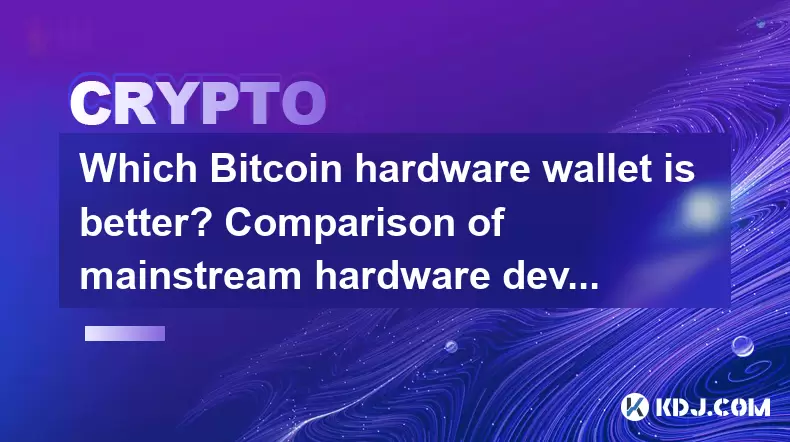
Which Bitcoin hardware wallet is better? Comparison of mainstream hardware devices
Jun 16,2025 at 02:08am
What Is a Bitcoin Hardware Wallet?A Bitcoin hardware wallet is a physical device designed to securely store the private keys associated with your cryptocurrency holdings. Unlike software wallets, which are more vulnerable to online threats, hardware wallets keep private keys offline, significantly reducing the risk of unauthorized access. These devices ...
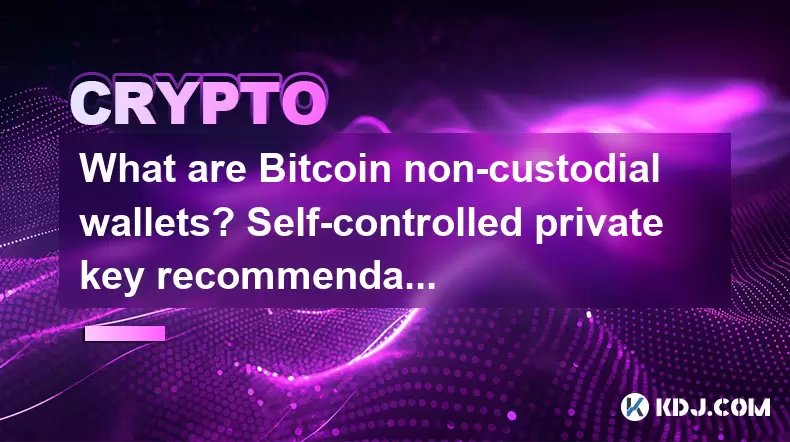
What are Bitcoin non-custodial wallets? Self-controlled private key recommendation
Jun 16,2025 at 11:29pm
Understanding Bitcoin Non-Custodial WalletsA Bitcoin non-custodial wallet is a type of digital wallet where users retain full control over their private keys. Unlike custodial wallets, which are managed by third-party services such as exchanges, non-custodial wallets ensure that only the user can access and manage their funds. This means no intermediary...
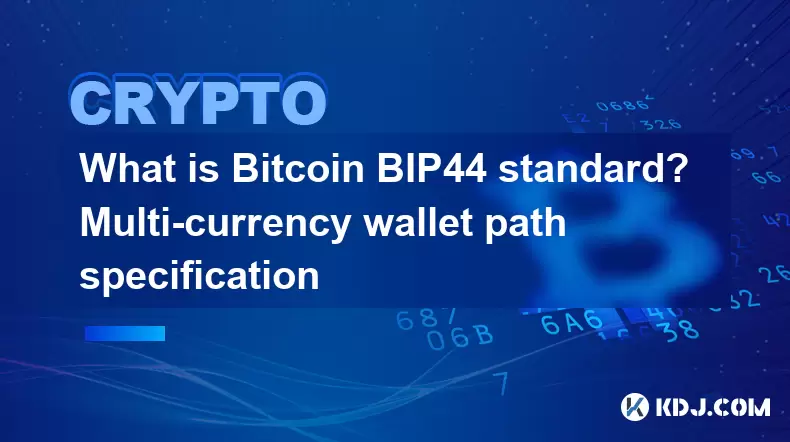
What is Bitcoin BIP44 standard? Multi-currency wallet path specification
Jun 15,2025 at 04:08pm
Understanding the BIP44 Standard in Bitcoin and CryptocurrencyThe BIP44 standard, which stands for Bitcoin Improvement Proposal 44, is a widely adopted hierarchical deterministic wallet structure used across various cryptocurrencies. It defines a structured path format that enables wallets to support multiple currencies while maintaining consistency and...

What is Bitcoin HD wallet? Advantages of layered deterministic wallets
Jun 16,2025 at 03:56pm
Understanding Bitcoin HD WalletsA Bitcoin HD wallet, or Hierarchical Deterministic wallet, is a type of cryptocurrency wallet that generates multiple keys and addresses from a single seed phrase. Unlike traditional wallets that create random private keys for each transaction, an HD wallet follows a structured hierarchy to derive keys in a deterministic ...
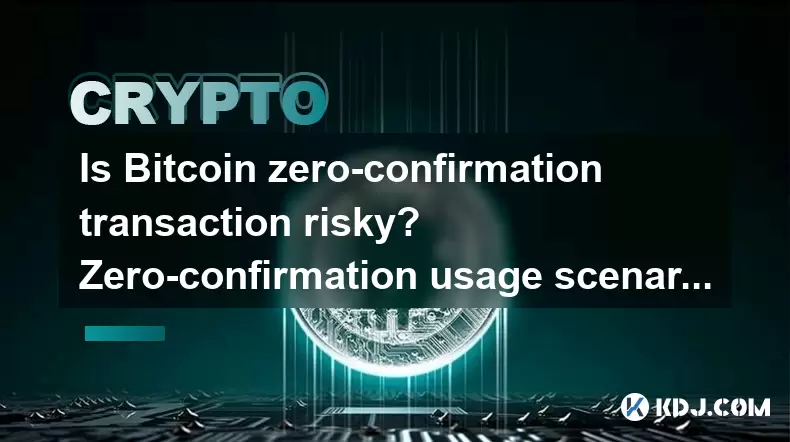
Is Bitcoin zero-confirmation transaction risky? Zero-confirmation usage scenarios
Jun 15,2025 at 03:57am
Understanding Zero-Confirmation Transactions in BitcoinBitcoin zero-confirmation transactions, often referred to as 'unconfirmed transactions,' are those that have been broadcast to the network but have not yet been included in a block. This means they have not received any confirmations from miners. While these transactions can be useful in certain con...
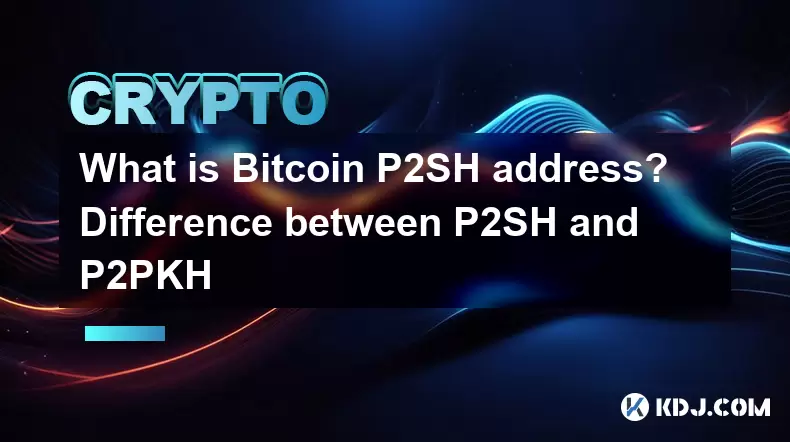
What is Bitcoin P2SH address? Difference between P2SH and P2PKH
Jun 16,2025 at 09:49pm
Understanding Bitcoin P2SH AddressesA Pay-to-Script-Hash (P2SH) address in the Bitcoin network is a type of address that allows users to send funds to a script hash rather than directly to a public key hash, as seen in earlier address formats. This innovation was introduced through BIP 16, enhancing flexibility and enabling more complex transaction type...

Which Bitcoin hardware wallet is better? Comparison of mainstream hardware devices
Jun 16,2025 at 02:08am
What Is a Bitcoin Hardware Wallet?A Bitcoin hardware wallet is a physical device designed to securely store the private keys associated with your cryptocurrency holdings. Unlike software wallets, which are more vulnerable to online threats, hardware wallets keep private keys offline, significantly reducing the risk of unauthorized access. These devices ...

What are Bitcoin non-custodial wallets? Self-controlled private key recommendation
Jun 16,2025 at 11:29pm
Understanding Bitcoin Non-Custodial WalletsA Bitcoin non-custodial wallet is a type of digital wallet where users retain full control over their private keys. Unlike custodial wallets, which are managed by third-party services such as exchanges, non-custodial wallets ensure that only the user can access and manage their funds. This means no intermediary...

What is Bitcoin BIP44 standard? Multi-currency wallet path specification
Jun 15,2025 at 04:08pm
Understanding the BIP44 Standard in Bitcoin and CryptocurrencyThe BIP44 standard, which stands for Bitcoin Improvement Proposal 44, is a widely adopted hierarchical deterministic wallet structure used across various cryptocurrencies. It defines a structured path format that enables wallets to support multiple currencies while maintaining consistency and...

What is Bitcoin HD wallet? Advantages of layered deterministic wallets
Jun 16,2025 at 03:56pm
Understanding Bitcoin HD WalletsA Bitcoin HD wallet, or Hierarchical Deterministic wallet, is a type of cryptocurrency wallet that generates multiple keys and addresses from a single seed phrase. Unlike traditional wallets that create random private keys for each transaction, an HD wallet follows a structured hierarchy to derive keys in a deterministic ...

Is Bitcoin zero-confirmation transaction risky? Zero-confirmation usage scenarios
Jun 15,2025 at 03:57am
Understanding Zero-Confirmation Transactions in BitcoinBitcoin zero-confirmation transactions, often referred to as 'unconfirmed transactions,' are those that have been broadcast to the network but have not yet been included in a block. This means they have not received any confirmations from miners. While these transactions can be useful in certain con...

What is Bitcoin P2SH address? Difference between P2SH and P2PKH
Jun 16,2025 at 09:49pm
Understanding Bitcoin P2SH AddressesA Pay-to-Script-Hash (P2SH) address in the Bitcoin network is a type of address that allows users to send funds to a script hash rather than directly to a public key hash, as seen in earlier address formats. This innovation was introduced through BIP 16, enhancing flexibility and enabling more complex transaction type...
See all articles

























































































